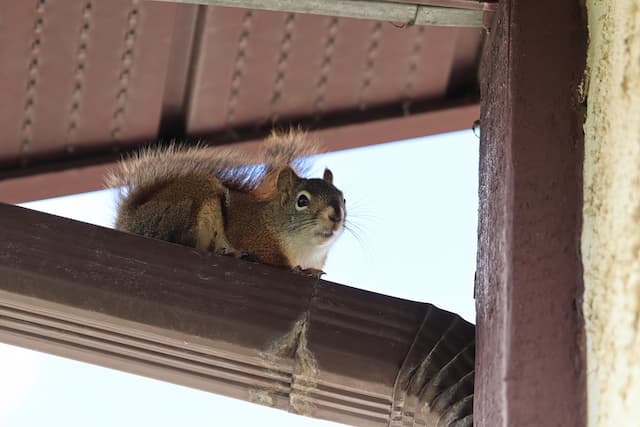When squirrels take up residence in your attic, the tranquilly of your home can be rapidly disturbed. While these furry animals may conjure up images of outdoor playfulness, their presence in your home can lead to a variety of problems, including structural damage and health risks. Effectively addressing and managing with squirrels that cause damage in attics requires an understanding of their behaviour, proactive measures, and professional assistance.
Comprehending Squirrel Conduct
Before launching a campaign to evict these trespassers, it is essential to investigate squirrel behaviour and determine why they find your attic so alluring. Attracted by the sequestered environment and potential food sources, squirrels seek attic spaces for shelter and nesting. Their incessant need to chew serves a dual purpose: it aids in the maintenance of their dentition and in the production of nesting materials. Sadly, this tendency to gnaw can result in damaged insulation, chewed wiring, and compromised structures.
Proactive Preventive Measures
Prevention is the first step in addressing the damage caused by rodents in attics. Start by inspecting the exterior of your home thoroughly, identifying and sealing potential entry points. Defensible areas, such as roof vents, soffits, and siding openings, should be fortified with squirrel-resistant materials. Cut back tree branches that provide rodents with easy access to your roof, limiting their access to your attic. By strengthening your home’s defences, you can deter squirrels from entering.
Implementing Humane Extermination Techniques
If rodents have already invaded your attic, you must employ humane removal techniques. Strategically placed one-way doors at entry points enable squirrels to exit but prevent their return. This method allows the animals to leave without causing damage, reducing the homeowner’s and the squirrels’ stress. However, timing is important; during baby squirrel season, additional precautions must be taken to prevent juvenile squirrels from being separated from their mothers.
Expertise in the Profession: An Essential Resource
Dealing with destructive attic rodents may require the assistance of pest control specialists. These specialists are equipped with the knowledge and instruments necessary to evaluate the extent of an infestation, implement effective removal techniques, and suggest long-term prevention measures. Their experience ensures that the intrusions are thoroughly dealt with, thereby decreasing the likelihood of a recurrence.
Addressing the Consequences
Once the squirrels have been effectively exterminated, it is necessary to address the mess they leave behind. The insulation should be replaced to restore energy efficiency and prevent further structural deterioration caused by their nesting activities. It is also essential to clean and sanitize the attic in order to eliminate the health dangers associated with accumulated droppings and urine.
Preserving Vigilance
Dealing with destructive attic rodents is not a one-time task. Regular maintenance and examinations are essential for preventing future infestations. Keep an eye out for squirrel-related indications, such as gnaw marks, droppings, and nesting materials. Fixing any potential holes in your home’s defences quickly can help prevent squirrel invasions.
In conclusion, dealing with the difficulty of dealing with attic rodents necessitates a multifaceted strategy that includes prevention, humane squirrel removal, professional expertise, and ongoing vigilance. By understanding squirrel behaviour, fortifying your home, and pursuing intervention in a timely manner, you can ensure the safety, structural integrity, and well-being of your living space. You can successfully navigate the complexities of home intruders and create a harmonious living environment for your family by adopting a proactive posture and committing to effective management.
